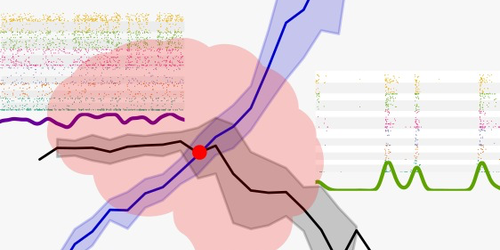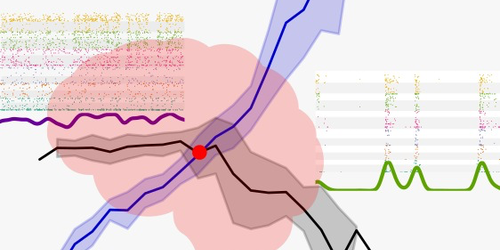New Evidence for Brain Criticality
Every morning, our brains transition from being fast asleep to being alert and awake. Researchers think that this transition is continuous, which means that it’s marked by a transition state with unique properties, called a critical point, but the data remain inconclusive. Antonio Fontenele at the Federal University of Pernambuco, Brazil, and colleagues now report new data that add weight to the “critical brain” argument. In experiments, they find that rat brains go through a critical point as the brains switch between states with different kinds of neuronal behavior. The team’s results could help narrow down the mechanisms underpinning the brain’s critical point.
Neurons emit tiny voltage spikes, either synchronously as repeated bursts or asynchronously as a constant, noise-like signal. Previous work has shown that synchronous spiking occurs in sleeping animals and asynchronous spiking in those that are awake. So, to study the transition between these states, Fontenele and co-workers looked at the spiking activity in the primary visual cortex of anesthetized rats, amassing a large dataset with a broad spectrum of spiking regimes.
Their data reveal spiking “avalanches”—spikes that occur in rapid succession and that are preceded and followed by silence. The number of spikes in each avalanche determined the “size,” and the duration of each avalanche determined the “lifetime.” As the rat brains went from a synchronous to an asynchronous state, the team found that the distributions of the avalanche size and lifetime followed power laws, signaling so-called scale invariance—a classic signature of a critical point. Moreover, the exponents of their observed power laws differ from those found in previous experiments, indicating that the phase transition belongs to another “universality class.” The researchers don’t yet know, however, what that class might be.
This research is published in Physical Review Letters.
–Nicolas Doiron-Leyraud
Nicolas Doiron-Leyraud is a Corresponding Editor for Physics based in Montreal, Canada.





